Search for cities, countries, lakes and rivers
South China Sea
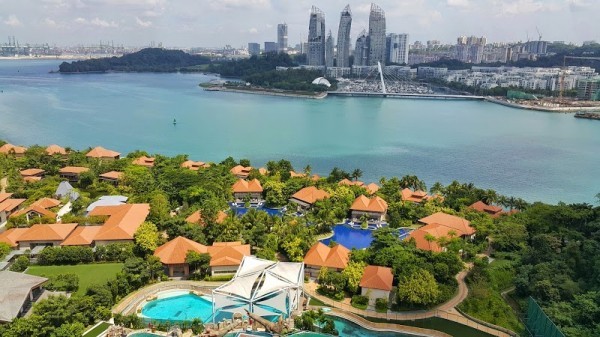
Sentosa, Singapore © Momchil Stoyanov
South China Sea Water Temperature: Current & Historical Data for Coastal Resorts
We find every spot where you can swim and tell you what the water temperature is there today and throughout the year
Current water temperature
73°F
minimal
81°F
average
87°F
maximum
Graph of Water Temperature Changes in the South China Sea Over the Last 60 Days
Water temperature in the South China Sea by month
| Month | Minimum | Maximum |
|---|---|---|
| January | 55°F | 88°F |
| February | 57°F | 90°F |
| March | 57°F | 90°F |
| April | 63°F | 91°F |
| May | 70°F | 91°F |
| June | 75°F | 91°F |
| July | 75°F | 91°F |
| August | 77°F | 91°F |
| September | 75°F | 91°F |
| October | 72°F | 90°F |
| November | 66°F | 90°F |
| December | 57°F | 88°F |
What is known about the South China Sea?
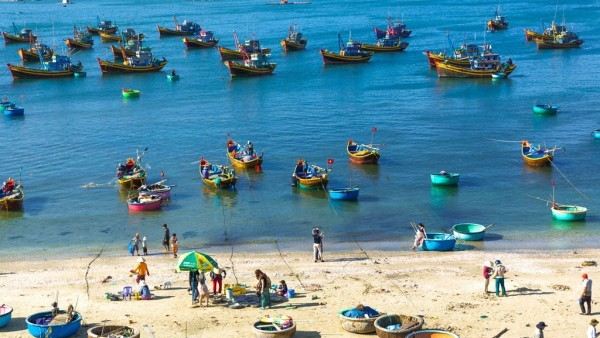 Mui Ne, Vietnam © povietnamu.ru
Mui Ne, Vietnam © povietnamu.ruThe South China Sea, located in the western Pacific Ocean, is bordered by several countries, including China, Vietnam, the Philippines, Malaysia, and Indonesia. Being a tropical sea, its coastal water temperatures remain warm throughout the year. In the cooler months, from December to February, water temperatures range from 75–81°F (24–27°C). During the hotter months, from April to June, temperatures rise to around 82–88°F (28–31°C), making it one of the warmest seas in the world.
Swimming in the South China Sea is popular, especially along the beaches of Vietnam, the Philippines, and southern China, where calm waters and warm temperatures make for excellent conditions. Many coastal areas offer white sandy beaches, coral reefs, and clear waters, making it ideal for swimming, snorkeling, and diving. However, swimmers should be aware of seasonal monsoons, which can bring strong waves and unpredictable currents, especially during the typhoon season from June to November. Despite these seasonal variations, the South China Sea remains a top destination for beachgoers and water sports enthusiasts throughout much of the year.
List of Countries Bordering the South China Sea
Popular Resorts of the South China Sea with the Warmest Water Today
Popular Resorts on the South China Sea Coast
- Hong Kong, Hong Kong
- Da Nang, Vietnam
- Sanya, China
- Langkawi, Malaysia
- Shenzhen, China
- Ha Long, Vietnam
- Hoi An, Vietnam
- Yalong Bay, China
- Singapore, Singapore
- Sentosa, Singapore
- Mui Ne, Vietnam
- Fuga Island, Philippines
- Guangao, China
- Kaohsiung, Taiwan
- Zhuhai, China
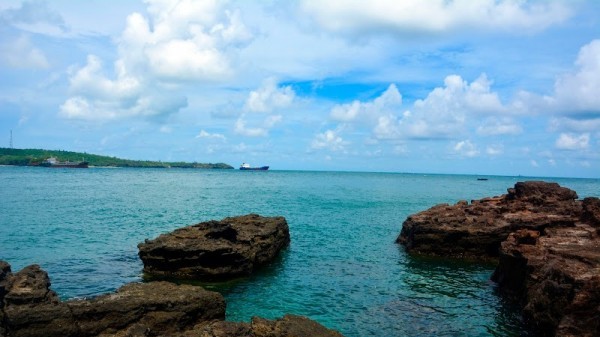
Beihai, China © Rqw G
Nearest Seas and Oceans
Frequently Asked Questions About the South China Sea
What is the water temperature in the South China Sea right now?
The water temperature in the South China Sea today ranges from 73°F (23°C) in Chenghua (China) to 86°F (30°C) in Sekudai (Malaysia).
Is it possible to swim in the South China Sea?
Yes, it is possible to swim in the South China Sea, as its warm waters make it a popular destination for beachgoers and swimmers.
In which month does the South China Sea have the highest and lowest water temperatures?
The highest water temperature in the South China Sea occurs in April, reaching 91°F (33°C), while the lowest is in January, dropping to 55°F (13°C).
Is the South China Sea colder than the Sibuyan Sea?
Yes, the South China Sea is slightly colder than the Sibuyan Sea, as its average annual water temperature is 79°F (26°C), while the Sibuyan Sea's is 84°F (29°C).
Which countries are washed by the South China Sea?
The South China Sea washes Macao, Singapore, China, Brunei, Hong Kong, Taiwan, Indonesia, Malaysia, Philippines, Thailand, and Vietnam.
What are the most popular resorts located on the South China Sea?
The most popular beach destinations on the South China Sea are Hoi An (Vietnam), Da Nang (Vietnam), Sanya (China), Nha Trang (Vietnam), Hong Kong (Hong Kong), Mui Ne (Vietnam), Langkawi (Malaysia), Dadunhai (China), Yalong Bay (China), Ha Long (Vietnam).
Do you have any extended or additional information about the South China Sea?
The South China Sea is a semi-enclosed Pacific Ocean off the coast of Southeast Asia, between the Indochina Peninsula, the islands of Kalimantan, Palawan, Luzon and Taiwan.
The South China Sea is characterized by the so-called northern invasions. This term is understood as the rapid spread of masses of cold air in winter, from the north, at a speed of about 15 m / s, to the northern and middle parts of the sea up to 15 ° N. sh., lasting at least 24 hours. These cold intrusions either spread directly to a large area, or cover it gradually, over 1-3 days. The frequency of northern incursions is different in different years, and their intensity also changes. Invasions of relatively cold air from the east, from the ocean, are sometimes observed.
The wave regime of the South China Sea is formed mainly under the influence of the monsoon system. The winds of the winter monsoon are very stable and strong, which favors the development of storm surges and swell. The most intense waves are observed in the northern part of the sea, the least in the southern. During the action of monsoon winds, waves can reach large sizes, not differing much from the sizes of ocean waves. During the period of the winter monsoon, the wave height can reach 7 m with a length of 175 m. The wind speed is relatively high and usually exceeds 12 m / s. Summer monsoon winds are weak and erratic. In this regard, a strong and moderate swell is relatively rare (from 5 to 32%). Even in the northern part of the sea, over 60% of the time, there is a weak swell or its complete absence.
Do you have a few more photos of the the South China Sea?
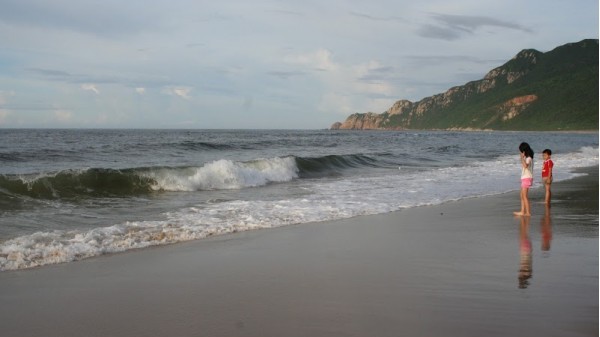
Xiachuan, China © Kevin Boston
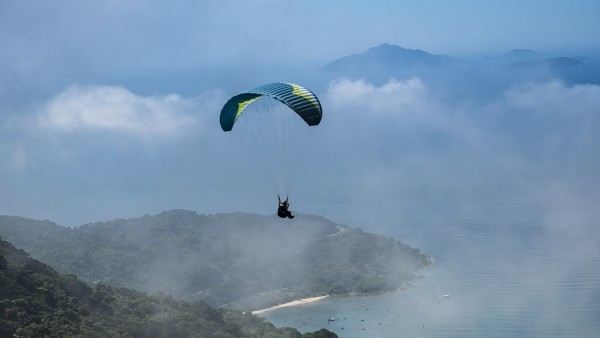
Da Nang, Vietnam © pixabay.com
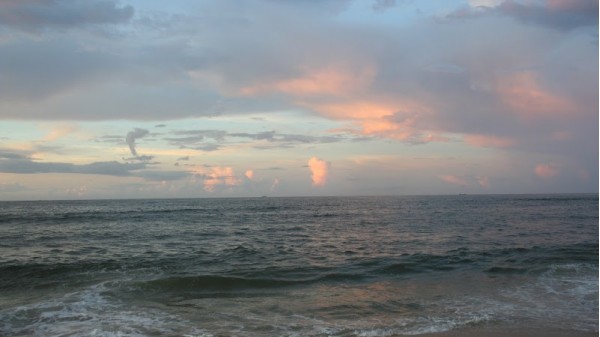
Xiachuan, China © Kevin Boston
